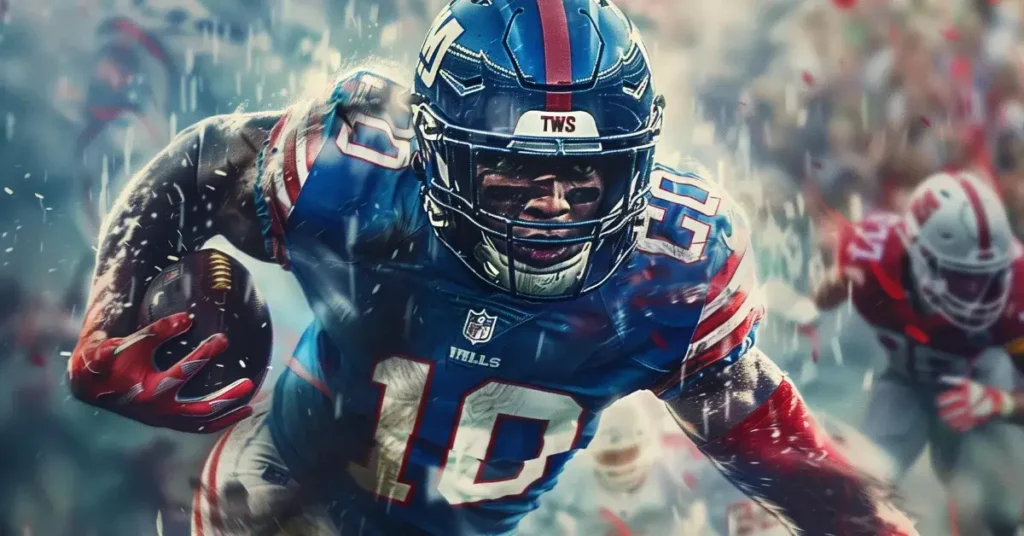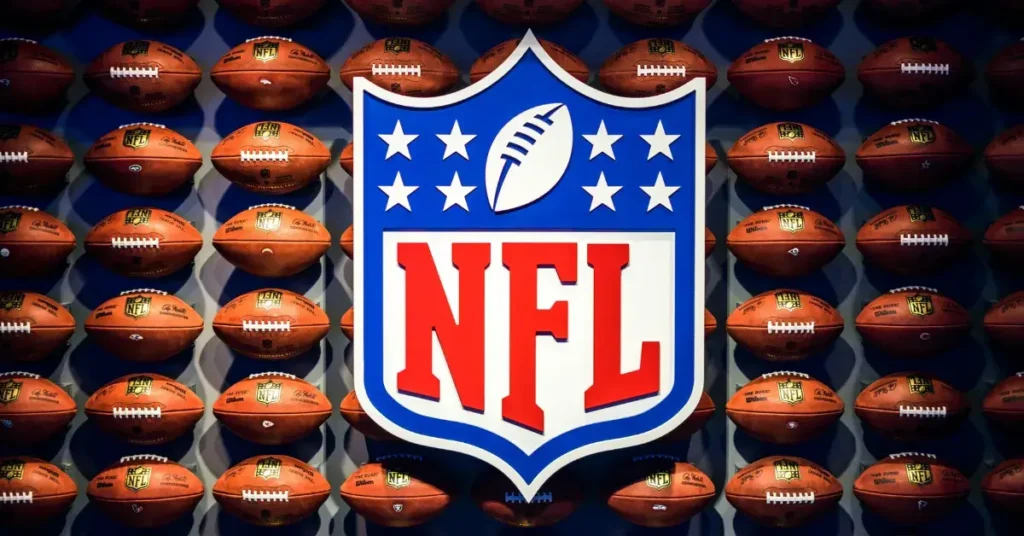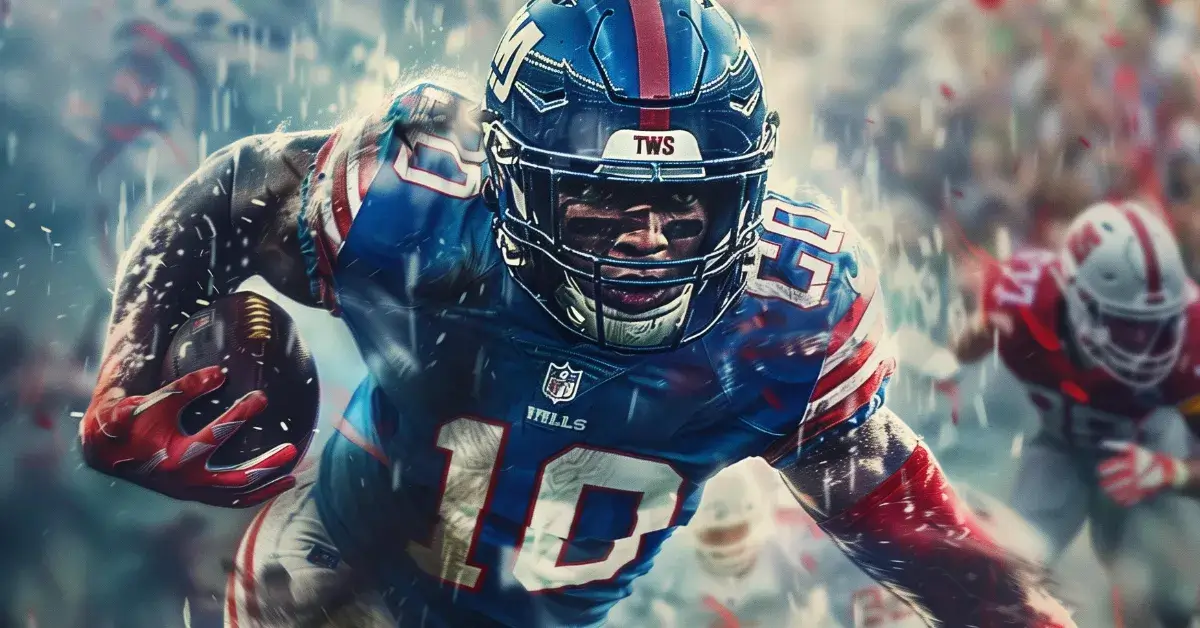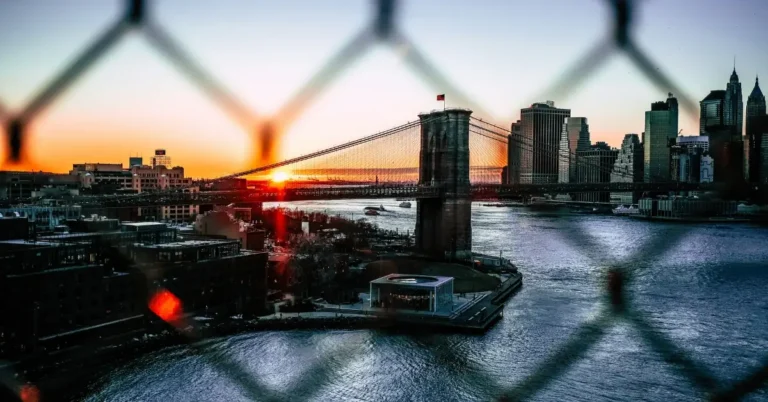Mascots are more than just sideline entertainment; they embody the spirit and passion of a team. In the case of the New York Giants, a storied franchise in the National Football League, the mascot topic is rather unique. Unlike most teams, the Giants have a distinctive approach to their sideline symbol. There’s a mix of historical references and modern fan culture surrounding the Giants and their representation.
Throughout the years, the idea of an official New York Giants mascot has varied, contrasting with the traditional approach seen in other NFL teams. This aspect of the Giants adds to their enigmatic allure and connection with their fan base. Insight into this facet of the team reveals a rich blend of tradition and fan-driven culture that is quite different from the common on-field mascots.
In exploring the story behind the New York Giants’ lack of a conventional mascot, the focus shifts to the fans and historical tidbits that have filled the gap. The mythology around the team’s presence and identity stands out, offering an intriguing dive into what makes the Giants’ mascot situation noteworthy within the league.
History of the New York Giants Mascot
From the excitement of touchdowns to the spectacle of game days, the mascot of the New York Giants has become an integral part of the football experience. A symbol of team spirit and fan engagement, the Giants’ mascot has a storied history that reflects the team’s enduring legacy in the NFL.
Origins and Evolution
The New York Giants introduced their official mascot during a period of heightened fanfare within the NFL. Personifying the thrills of the game and the Giants’ competitive spirit, the mascot’s evolution has mirrored the team’s fortunes on and off the field. Initially a physical embodiment of a touchdown, the mascot has since gone through various iterations that resonate with different eras of fans.

Famous Mascots Throughout the Years
In 1994, TD made an impactful entry as the New York Giants’ mascot, adding a new element of entertainment on game day. With his dynamic presence, TD became a memorable figure for Giants supporters during the ’90s. His tenure lasted until 1999, leaving a lasting impression of high-spirited sportsmanship among the football community.
Significant Changes and Updates
Mascot characters evolve to stay relevant and engaging for audiences. The Giants’ mascot has seen updates to its costume and character to reflect the enthusiasm of modern football culture. These transformations are geared toward enhancing fan interaction and providing an energetic atmosphere throughout the Giants’ participation in the NFL.
New York Giants Team Overview
The New York Giants stand as one of the marquee franchises in the National Football League, boasting a storied history with notable achievements, distinctive team colors and branding, and a revered status within the NFL. Let’s embark on a journey through the vibrant tapestry that is the Giants’ legacy.
Notable Achievements
The Giants have etched their name into NFL history with eight league championships, including four pre-Super Bowl titles and four Super Bowl victories. Their most recent Super Bowl triumph came in February 2012, underlining their credentials as a dominant force in the league. The franchise’s commitment to excellence is evident in their consistent push for postseason appearances.
Team Colors and Branding
Immediately recognizable, the Giants’ team colors are bold blue and red. These colors reflect the team’s identity and are prominently featured in their logo and uniforms. The Giants’ logos have traditionally centered around the powerful concepts of a “giant” football player and the “NY” initials, symbolizing their deep roots in New York’s sports culture.
NFL Franchise Status
As a seasoned NFL team, the Giants hold a prestigious standing as one of the National Football League’s cornerstone franchises. Founded in 1925, they are lauded as one of the oldest teams in the league’s history. The Giants’ longevity and success have cemented their position as a beloved and enduring pillar of professional American football.

Mascot’s Role and Impact
In the vibrant tapestry of NFL traditions, the New York Giants’ mascot serves as a keystone, embodying the spirit of the football team and enhancing the game day experience. This symbol of team pride extends beyond the stadium, engaging the community and bolstering the Giants’ branding efforts.
Game Day Traditions
The Giants’ mascot is an integral part of game days, igniting fans‘ excitement with every down and touchdown. It leads cheers, interacts with the crowd, and participates in pre-game routines, infusing MetLife Stadium with an infectious energy that reverberates across the stands.
Community and Fan Engagement
Beyond the field, the mascot is a community ambassador, attending charity events and public gatherings, strengthening the bond between the football team and its fans. This engagement is key to solidifying community support and fostering a sense of belonging and loyalty among Giants supporters.

Representation and Branding
The mascot is more than just a sideline entertainer; it is a visual representation of the Giants’ brand. Merchandise featuring the mascot generates revenue and serves as a tool for marketing campaigns, helping the franchise to maintain a strong presence both in the NFL and in the broader sports culture.
Current New York Giants Mascot
In the realm of NFL mascots, the New York Giants’ situation stands out – they’re a storied team without an official mascot. This rarity leaves fans hungry for a touch more of that game-day spirit emblematic of the league.
Profile and Characteristics
The New York Giants do not have a traditional, costumed mascot. Instead, their identity is symbolized by their iconic helmet design and team colors—blue, red, and white—which are recognized and revered within the NFL. Fans often use the term “Big Blue” to refer to the team, embracing these colors as part of the Giants’ identity.
Fan Interactions
Despite the absence of an official mascot to rally the crowds, the Giants’ fan base is fervent and passionate. They bring to life the spirit of their team through their unwavering support and celebration of the team’s heritage. The enthusiasm found in the stands of MetLife Stadium, with fans donning helmets and team colors, compensates for the mascot vacancy.
Mascot’s Presence in Media
While no Giant is traipsing the sidelines, the Giants have a presence in the media through their emblematic imagery. From social media to merchandise, the helmet and team colors serve as the de facto mascots, uniting fans and representing the team in various forms of media and NFL promotions.
Comparative Analysis With Other NFL Mascots
The exploration of team mascots draws attention to how the New York Giants compare to others within the NFL. From beloved figures that engage fans to symbols of team spirit, these mascots vary widely in their history, design, and role during games.

Mascot Similarities and Differences
Most NFL mascots share a common goal: to amplify team spirit and enhance the game day experience. The New York Giants’ mascot stood out in the late 1990s, but current mascots like the New England Patriots’ Pat Patriot and the Pittsburgh Steelers’ Steely McBeam evoke regionally inspired personas that resonate with their fan bases. Unlike the Giants, many teams like the Dallas Cowboys and the Green Bay Packers opt not to have official mascots.
Mascots of NFC Teams
The NFC is rich with varied mascots. The Philadelphia Eagles’ Swoop shares the bird theme with the Minnesota Vikings’ Viktor the Viking, yet they present contrasting historical and cultural references. Unlike their NFC East rival, the Giants, the Dallas Cowboys do not employ a mascot to represent their team’s competitive spirit.
Unique Features Amongst NFL Mascots
Individuality is a hallmark of NFL mascots. The New York Jets, lacking a physical mascot, rely on their “J-E-T-S” chant to energize fans. In contrast, the Los Angeles Rams Rally Ram and the Las Vegas Raiders’ Raider Rusher boast distinctive features that embody their teams’ identities, offering an engaging presence that is as memorable as the games themselves.
Cultural Significance of Mascots in Sports
Mascots have become an indelible part of sports culture, especially in American football where they’re not just entertainers but icons of team spirit and unity. These costumed characters provide a visual symbol for the team and a rallying point for fans.
Mascots in American Football
In the NFL, mascots like the one representing the New York Giants play a pivotal role in enhancing the game-day experience. They engage the audience through choreographed antics, reinforcing the communal atmosphere of football games. Each mascot has a unique backstory, often related to the team’s history or city’s heritage, strengthening the bond between the team and its fans.
Symbolism and Team Identity
Mascots go beyond entertainment and serve as a symbol of pride and loyalty for the team. They embody the characteristics the team wants to project: strength, agility, and competitiveness. This symbolism solidifies the team’s identity, forges a deeper connection with the fans, and enhances the sense of belonging among spectators who see part of their identity reflected in these vibrant figures.
Influence on Merchandising and Marketing
Mascot-themed merchandise is a significant revenue stream for NFL franchises. Plush toys, clothing, and accessories bearing the mascot’s likeness are popular among fans of all ages. For instance, the Giants’ mascot contributes to the team’s brand recognition, turning it into a marketable figure crucial for promotional campaigns aimed at sustaining and growing the fan base.
Behind the Scenes
Diving into the intricate world of the New York Giants’ mascot, one discovers the tireless creativity, dedication, and logistical precision that breathes life into this symbolic figure. Let’s unveil the layers of effort that transform a simple concept into a vibrant, crowd-cheering mascot.
Creating a Mascot Costume
Designing a mascot costume is both an art and a science, involving meticulous sketches and durable materials that withstand the rigors of performances. For the New York Giants, who had “TD” in the 1970s and now have an unofficial mascot that resonates with fans, attention to detail is critical to reflect the team’s identity.
The People Behind the Mascot
Behind every enthusiastic mascot is a team of professionals with diverse skills, from costume designers to choreographers. Individuals inhabiting the costume must exhibit charisma and endurance, transforming into the character to rally the Giants’ fan base.
Logistics and Operations
Coordinating mascot appearances is a logistical puzzle, involving scheduling, maintaining the costume, and ensuring the mascot’s presence at key events. Each outing is methodically planned to maximize impact and engagement with fans, reflecting the team’s spirit.
Challenges and Controversies
In exploring the history of the New York Giants’ mascot, it’s clear that the journey has been rife with challenges and controversies. These issues range from the mascot’s representation to public critiques and the decisions behind mascot retirements and rebranding.
Issues in Mascot Representation
The New York Giants, affectionately known as the Gmen, have faced issues in representing their brand through a mascot. Historically lacking an official mascot, they have relied on the strength of their emblem and fan community. However, the brief presence of a mascot named Touchdown in the 1970s suggests the team once recognized the potential value a mascot could add to their identity.
Public Reception and Criticisms
Mascots often become beloved symbols, but the journey to fan acceptance can be turbulent. For the Giants, without an official mascot to rally behind, fans have voiced diverse opinions. An unofficial mascot popular with fans has filled in the gap, albeit without formal recognition from the team. This absence has garnered both support and criticism, with each camp presenting compelling cases for and against adopting a mascot.
Mascot Retirements and Rebranding
The notion of Retirement for a non-official mascot presents a peculiar scenario. Unlike other franchises that have cycled through mascots, the Giants have held a steady line. While rebranding efforts have seen changes to logos and uniforms, as detailed on Wikipedia, the mascot’s role—or its vacancy—remains a static aspect of the Giants’ identity, indicating a strategic choice in brand representation.
Future of Sports Mascots
The sports world continuously evolves, and with it, the mascots that ignite team spirit and entertain the masses are also transforming. In the realm of professional sports, like the NFL, innovative trends are shaping how we interact with these beloved symbols of teams like the New York Giants.
Technological Advancements
The integration of technology is revolutionizing mascots across the board. In the NFC East and beyond, we might soon see holographic mascots greeting fans or augmented reality allowing mascots to virtually appear in fans’ living rooms. The Giants, always looking to engage their community better, could adopt these technological feats to enhance their mascot’s presence even without a physical costume.
Fan Expectations
Today’s audience craves more than just a dance routine from a mascot. Football fans, especially those of iconic franchises, expect mascots to be interactive and multi-dimensional characters. Social media platforms could become a virtual stage where the Giants’ mascot not only entertains but also promotes team values and community initiatives.
Mascot’s Evolving Role
The role of mascots like those representing NFL teams is expanding beyond the stadium. As community ambassadors, they are playing an increasingly significant role in charitable events and public relations, symbolizing the team’s commitment to the local and national community. This could further deepen the connection between a team like the Giants and its fan base, transcending traditional mascot duties.
Conclusion
The New York Giants hold a unique place in NFL culture, largely due to the absence of an official mascot donned in a characteristic costume. Their approach to team representation is steeped in the strength of their name, reflecting the franchise’s history and tradition. Though the Giants once had a mascot named “TD” in the 1970s, the position has since been vacant.
Fans may recognize an unofficial mascot that garners support, yet it’s the team’s identity that prominently stands as its symbol. This highlights an interesting trend within some professional sports teams, where the essence of the team, its accomplishments, and its brand outweigh the need for a mascot.
The Giants’ strategy underscores a confidence in their brand’s power and the loyalty of their fan base. The decision to forego a traditional mascot illustrates confidence in their storied legacy—with four Super Bowl championships as proof—rather than relying on a costumed figure for fan engagement.
In this way, the New York Giants’ approach to their mascot is a testament to a franchise confident in its historical stature and recognition by supporters. Therefore, the New York Giants beautifully exemplify how a team can thrive with an enduring legacy that resonates stronger than a physical mascot ever could.
Frequently Asked Questions
In the diverse landscape of NFL team symbols, the New York Giants’ approach to their mascot garners particular curiosity from fans and observers alike. This section aims to clarify common inquiries about the Giants’ representation.
Who is the official mascot of the New York Giants?
The New York Giants do not have an official mascot. Historically, they had a mascot called “TD” in the 1970s, but currently, they choose to not have a traditional costumed figure.
Has the New York Giants mascot ever won the NFL mascot of the Year award?
Since the New York Giants do not have an official mascot, they have never been a contender for the NFL Mascot of the Year award.
Which NFL team’s mascot is considered the oldest and how does it compare to the Giants’ mascot?
The Arizona Cardinals’ mascot, Big Red, is one of the oldest, having debuted in 1998. This contrasts with the Giants, who currently do not have a mascot figure.
Can you list NFL teams that operate without official mascots and is the New York Giants among them?
The New York Giants are among the few NFL teams without an official mascot. Others include the New York Jets and the Green Bay Packers.
Among all NFL mascots, where does the New York Giants mascot rank?
It’s impossible to rank the New York Giants amongst NFL mascots because they do not have one.
Are there any NFL teams that have more than one mascot, and how does this compare to the New York Giants?
There are NFL teams with multiple mascots, such as the Baltimore Ravens with both Poe and Rise and Conquer, the Raven birds. Since the New York Giants opt not to have a mascot, there is no direct comparison.





